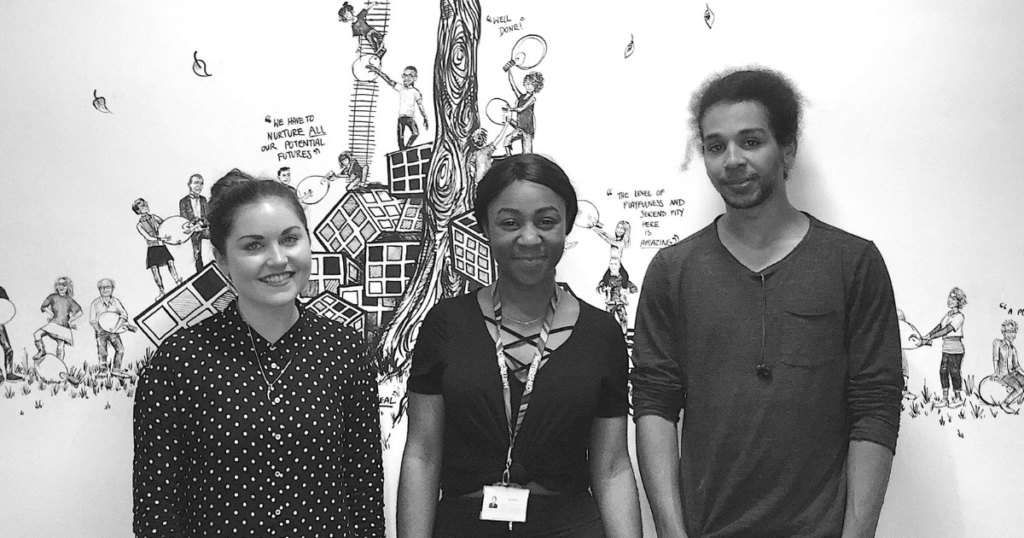For non-design disciplines, use Mind Map Pro to help you think outside of the box
Design thinking is a technique used for creative problem solving and for generating innovative solutions.
Despite what the name suggests, not only designers will benefit from design thinking. Although this type of thinking emerged from the creative industry, it can be applied across any sector and utilised throughout all levels of seniority to benefit an organisation.
Anyone hoping to innovate, from an engineer, business person, writer, artist, scientist, developer to musician or anything in between, could use design thinking.
But before we dive into the process of design thinking, let’s think about why innovation is a challenge and consider how we can be more open to it.
- Why can’t we be innovative all the time?
- Why are we more creative on some days than others?
- How do we inject creativity into disciplines that are dull?
- Is it difficult to think differently?
- How can I “do” design thinking?
- Why does design thinking work?
- What tools can I use for design thinking?
- Who can I practice design thinking with?
Why can’t we be innovative all the time?
You might find yourself searching for that one big idea, but if that’s the case, you’ve fallen victim to one of the biggest misconceptions about innovation.
People often think of innovation as a singular, because those really special ideas don’t seem to come around very often.
But lots of smaller new ideas or processes can contribute to bigger and more impactful evolutions for your craft or industry. Innovation can be bitesize, just like productivity can be bitesize.
Innovation isn’t just about one rare, bright thought, so if innovation can occur in lots of different ways, why can’t we be innovative all the time? One argument is that creativity comes to us more easily sometimes, so on one day you might be more creative than another.
Why are we more creative on some days than others?
There are lots of different opinions about creativity. Some argue that when you are tired, your brain doesn’t function as efficiently as usual and this is actually beneficial for creative thinking.
This theory suggests that when people are tired, we are more open to distractions, and in parallel to this, our memory is not working as sharply as usual. Combined, this allows our brains to pick up new connections that don’t strictly follow the logic that our memory serves us… and voila, thinking outside the box provokes innovation.
But the truth is, it’s hard to pin point exactly what makes us more creative or innovative in some instances. However, it is possible to entice creative thinking into situations that start off fairly uninspiring.
How do we inject creativity into disciplines that are dull?
It’s true that some industries don’t go hand-in-hand with creativity in an obvious way, but by looking past face-value, it’s always possible to innovate.
Firstly, innovation could start with an operational change that gives personnel increased autonomy, and with more people making their own decisions, you have more diverse thinking.
Small changes like this, by a single person, can have an impact on an entire team, creating a ripple effect out-of-the-box thinking.
Secondly, don’t discount wild ideas, they could be implemented and adapted, and perhaps they won’t seem so wild once you see results. Just imagine, you could be hailed as a revolutionary in years to come.
Further to this, become more comfortable with risk, even be on a personal level. For example, the risk of feeling embarrassed after sharing your seemingly wild idea with your team members. Create an environment where there is no bad idea, but instead, an open approach that encourages provocative thinking.
Read more tips on how to turn creativity into reality.
Is it difficult to think differently?
Thinking differently can provoke innovative thoughts, but that doesn’t mean that thinking differently needs to be entirely unnatural. Instead, thinking differently could translate to thinking in a less constrained way, which might even feel more natural.
Jonas Salk, the American medical researcher and virologist who discovered and developed one of the first successful polio vaccines, said: “Intuition will tell the thinking mind where to look next.”
You don’t necessarily need to swim against the current to come up with creative ideas. Work in the way that you feel intuitively will suit you at that particular time. Maybe you will think more freely using visuals, colours, or a sense of kinesthesis. Allow yourself to go with the flow instead of restricting yourself and you’ll welcome creative, innovative thoughts.
How can I “do” design thinking?
Now we’ve covered why there is a need for design thinking to provoke creativity and innovation, it’s time to explain exactly how design thinking works.
Design thinking is all about ideas, experimentation and empathy.
To begin with, you need to dedicate some time to coming up with ideas… to coming up with lots and lots of ideas, actually. The process of ideation is when you concentrate on idea generation, which you can do by mind mapping. To begin with, the key is quantity, and at some point during the ideation process, you’ll have come up with some really good ideas.
Exploring these ideas through experimentation is the next key stage of design thinking. This is a chance to consider the potential opportunities or challenges that are linked to these ideas. Examine their potential and experiment with how two seemingly separate ideas might actually work better when you put them together.
Design thinking also involves empathy. It is a human-centered approach, which places high importance on the end user and the human need for the product or process you are exploring. At this point, you can think in terms of quality by empathising with your end user.
Why does design thinking work?
Design thinking is so powerful because as a process, it is a simple yet efficient way to come up with genuinely useful new ideas.
It follows a natural way of thinking, which helps people to experiment with new ideas in an empathetic way. You end up with innovative ideas with real world application because you’ve come up with ideas whilst thinking about the people who are going to benefit from your innovation.
What tools can I use for design thinking?
Try out Mind Map Pro for free to use design thinking for your next project.
For ideation: Use the mind mapping functionality to come up with lots of ideas
For exploration: Use the chat tool to discuss ideas with your team members
For empathy: Use the detailed view to add notes, images and data to back up your research into your end user to help promote empathy
Mind Map Pro is a useful platform for design thinking because you can practice collaborative thinking to come up with new ideas in a visual way.
Who can I practice design thinking with?
Design thinking with Mind Map Pro works especially well for teams because your mind maps are connected across devices to show real time onscreen updates from all collaborators, so innovation can be a social process, even when you are using different devices from different locations.
Mind Map Pro is also an extremely effective platform for presenting your innovative solution to a client or stakeholder. Either they can be invited directly into the team with specified access rights, so you can control what they can edit, or the mind map can be exported as an image or office document to share in another format.
Learn about managing collaborators by updating your Doodle’s user roles.
Try design thinking for yourself
Design thinking helps you to redefine problems and engineer innovative solutions, with the opportunity to raise important questions and challenge assumptions.
For those who want to know how to think up better ideas, design thinking is a process for switching on your creativity and helping you to be innovative.
Next time you find yourself wondering how to switch on innovation, kick start your creativity using design thinking with Mind Map Pro. It’s free!



